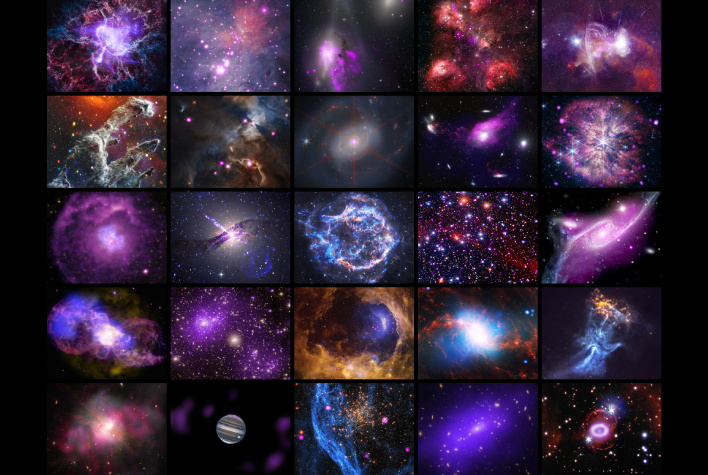NASA's Chandra Telescope Turns 25, Shares Stunning Images That May Be Among Its Last
The Chandra X-ray Observatory launched aboard the space shuttle Columbia on July 23, 1999. Since that time, the telescope has delivered some of the most breathtaking imagery captured in deep space, including the most distant black hole ever seen. It has even been used to unveil mysteries that astronomers didn’t even know existed at the time of its launch, according to NASA. To celebrate the space-based telescopes 25th birthday, NASA has shared 25 never-before-seen images, such as the Peacock Galaxy seen above.
“For a quarter century, Chandra has made discovery after amazing discovery,” remarked Pat Slane, director of the Chandra X-ray Center located at the Smithsonian Astrophysical Observatory in Cambridge, Massachusetts. “Astronomers have used Chandra to investigate mysteries that we didn’t even know about when we were building the telescope — including exoplanets and dark energy.”
The 25 images are just a small part of the nearly 25,000 observations Chandra has taken during its time in space. Astronomers continue to use the telescope’s data in conjunction with other powerful telescopes, such as the James Webb Space Telescope, and the Imaging X-ray Polarimetry Explorer (IXPE). Last year, Chandra teamed up with Webb to discover evidence for two of the most distant black holes ever seen, and worked with IXPE to reveal “bones” of a ghostly cosmic hand.
Even with all of its success, budget cuts threaten the future of the space observatory. NASA’s head of astrophysics, Mark Clampin, recently stated officials are struggling with hard budget decisions, and difficult choices are having to be made to free up money to develop future telescopes. But many in the field simply cannot imagine pulling the plug on Chandra so soon.
“Just recently Chandra teamed up with the James Webb telescope to discover this supermassive black hole at the edge of the universe. It was the earliest black hole, the most distant black hole ever discovered,” says David Pooley of Trinity University, an astronomer who has been using Chandra since it launched into orbit in a space shuttle back in 1999.
During Chandra’s 25 years of observing the Universe, its science has led to over 700 PhDs, and over 10,000 peer-reviewed papers have been written based on Chandra data. Even if Chandra meets an untimely demise, it has already proven to be one of the most productive NASA missions in astrophysics.


